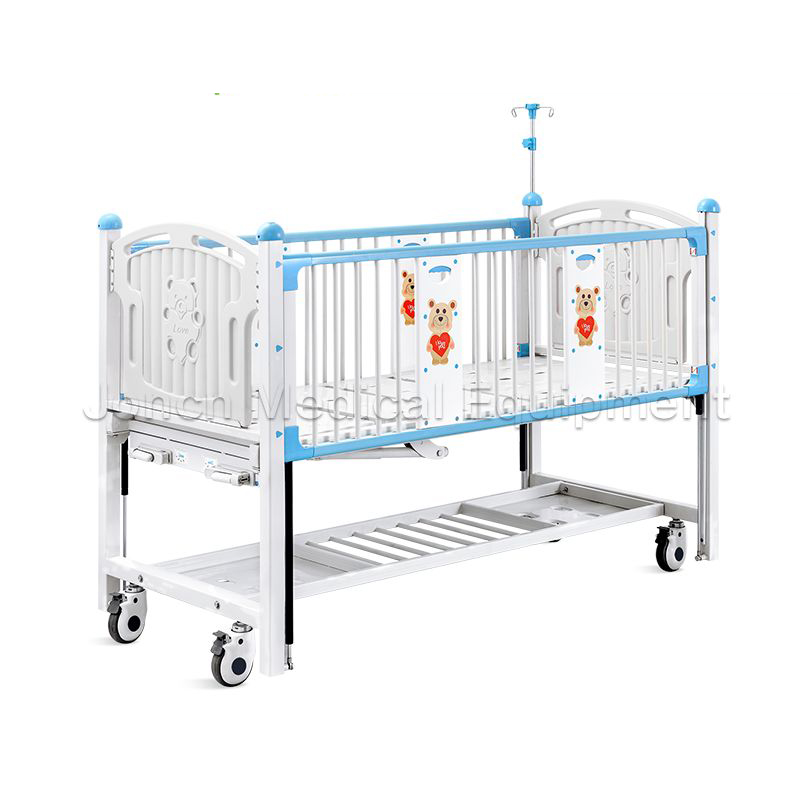
In any healthcare setting, from bustling hospitals to private clinics, the Medical Trolley is an indispensable piece of equipment. Far from being a simple cart, these specialized trolleys are designed to improve efficiency, organization, and patient safety. They are engineered to transport vital supplies, instruments, and medications precisely where and when they are needed. While they all serve the core function of mobility, a closer look reveals a diverse range of trolleys, each tailored for a specific purpose.
The emergency or crash trolley is arguably the most critical type of medical trolley. Instantly recognizable, this cart is specifically designed to carry all the necessary equipment for a life-threatening medical emergency. It is a mobile hub for cardiopulmonary resuscitation (CPR) and other critical interventions.
Key Features: It typically includes a top surface for a defibrillator, multiple drawers for a variety of medications and intubation equipment, and a backboard. The trolley is often sealed with a breakable lock to ensure the contents are complete and ready for immediate use.
Primary Use: A crash trolley is kept in a state of readiness in emergency rooms, intensive care units (ICUs), and wards to provide immediate care during a cardiac arrest or other medical crises.
Anesthesia trolleys are specialized carts used by anesthesiologists and anesthetists to prepare and administer anesthetic agents. They are designed for precise organization to ensure the right medication is available at the right time during a surgical procedure.
Key Features: These trolleys feature numerous small, partitioned drawers to hold different sizes of syringes, needles, laryngoscopes, and a wide array of medications. They often have a smooth, easy-to-clean surface and a small waste disposal container.
Primary Use: Used in operating rooms (ORs) and recovery areas, an anesthesia Medical Trolley is essential for maintaining a sterile and organized workspace, ensuring patient safety throughout surgery.
A medication trolley is a crucial tool for nurses and healthcare professionals for the safe and efficient distribution of medicines to patients. Its design focuses on security and organization to prevent medication errors.
Key Features: This type of trolley typically has a lockable system to secure controlled substances. It features a compartmentalized drawer system or a series of trays, with designated slots for each patient's medication doses, often arranged by room number or name.
Primary Use: Medication trolleys are used daily on hospital wards to transport and administer prescribed drugs, ensuring the correct patient receives the correct medication at the correct time.

Also known as procedure or dressing trolleys, these carts are designed to carry supplies for wound care, minor surgical procedures, or other patient treatments. Their focus is on accessibility and a clean, sterile workspace.
Key Features: They usually have one or more flat shelves for sterile trays, a basin or bucket for waste, and a top surface for laying out instruments. Many are constructed from ABS plastic or stainless steel for easy disinfection.
Primary Use: A treatment Medical Trolley is commonly used at the patient’s bedside to perform tasks such as changing dressings, administering injections, or performing minor diagnostic procedures.
Not all trolleys are for patient care. Utility trolleys are the workhorses of the hospital, designed for a variety of non-clinical tasks.
Key Features: These are simple, sturdy carts with multiple open shelves or bins. They are built for durability and ease of movement.
Primary Use: They are used to transport clean linens, lab samples, patient files, and other general supplies between different departments.
While not directly used for clinical tasks, these are vital for maintaining a clean and hygienic environment.
Key Features: They are large, multi-functional carts with designated compartments for clean linens, a bag for soiled laundry, and space for cleaning supplies.
Primary Use: Housekeeping staff use these trolleys to collect and distribute fresh linen and bedding, contributing to infection control and patient comfort.
In summary, the modern Medical Trolley is a highly specialized tool tailored to the specific needs of different healthcare departments. Understanding the unique features and uses of each type is essential for any professional in the medical field. The right trolley not only saves time and effort but, more importantly, enhances the safety and quality of patient care.

The EMD200001 ABS materials electric hospital bed, is designed to meet the demanding needs of healthcare facilities and institutions. With its robust technical parameters, including dimensions of 2290...
See Details
Our collection of cutting-edge medical equipment is designed for intensive care units! The EMD200003 electric five-functional ICU bed stands as a pinnacle of innovation, offering unparalleled function...
See Details
The OD200002 high quality manually adjustable hospital bed. Engineered with precision and versatility in mind, this bed boasts technical parameters that ensure patient comfort and caregiver convenienc...
See Details
The CD180001 manual controlled multi-functional baby nursing bed with guardrails is a pinnacle of safety, functionality, and comfort for your young patients. With precise technical specifications like...
See Details
Our featured product, the OBT-B05 sturdy aluminum alloy material medical patient dining overbed table, is designed with precision and functionality in mind. With dimensions of 800*400*725/965mm, this ...
See Details
Multi-functional surgical operating table, a solution designed to meet the diverse needs of modern surgical procedures. With precise Technical Parameters including a length and width of 1960mm and 560...
See DetailsIf you are interested in our products, please consult us
Products
Mobile terminal